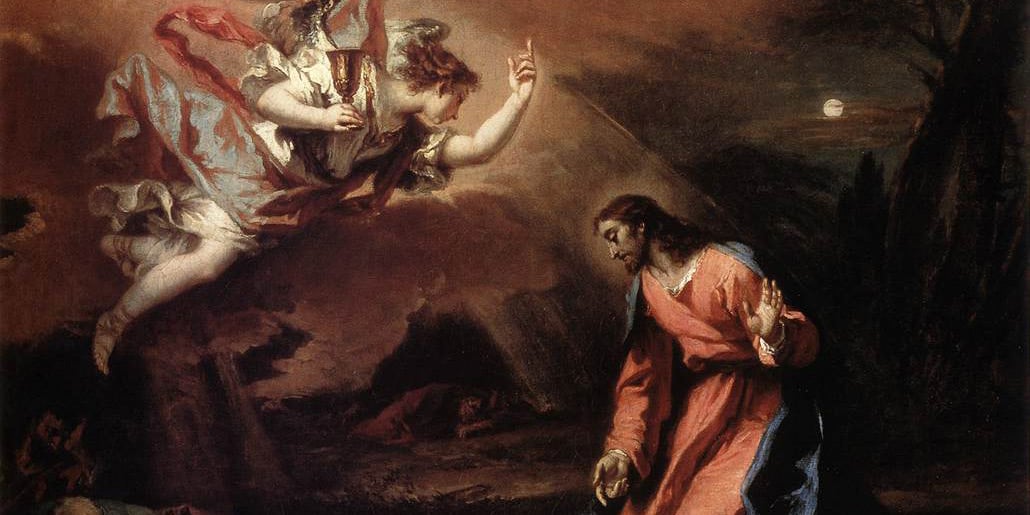Regina Caeli – Queen of Heaven, Rejoice!
The Regina Caeli, Latin for “Queen of Heaven,” is a hymn and prayer ...

This reading on the mean of Christ’s sufferings explains the Lord’s passion by means of several key bible passages including of the piercing of Christ’s side in John 19. Theodoret of Cyr interprets the blood and water flowing from that wound as signs of the sacraments of baptism and Eucharist, as did many of the early Church fathers.
Of his own free will Jesus ran to meet those sufferings that were foretold in the Scriptures concerning him.
He had forewarned his disciples about them several times; he had rebuked Peter for being reluctant to accept the announcement of his passion, and he had made it clear that it was by means of his suffering that the world’s salvation was to be accomplished.
This was why he stepped forward and presented himself to those who came in search of him, saying: I am the one you are looking for. For the same reason he made no reply when he was accused, and refused to hide when he could have done so; although in the past he had slipped away on more than one occasion when they had tried to apprehend him.
Jesus also wept over Jerusalem because by her unwillingness to believe she was bent on her own ruin, and upon the temple, once so renowned, he passed sentence of utter destruction.
Patiently he put up with being struck in the face by a man who was doubly a slave, in body and in spirit. He allowed himself to be slapped, spat upon, insulted, tortured, scourged and finally crucified. He accepted two robbers as his companions in punishment, on his right and on his left. He endured being reckoned with murderers and criminals. He drank the vinegar and the bitter gall yielded by the unfaithful vineyard of Israel. He submitted to crowning with thorns instead of with vine twigs and grapes; he was ridiculed with the purple cloak, holes were dug in his hands and his feet, and at last he was carried to the grave.
All this he endured in working out our salvation. For since those who were enslaved to sin were liable to the penalties of sin, he himself, exempt from sin though he was and walking in the path of perfect righteousness, underwent the punishment of sinners.
By his cross he blotted out the decree of the ancient curse: for, as Paul says: Christ redeemed us from the curse of the law by becoming a curse for us; for it is written: “Cursed be everyone who hangs on a tree”. And by his crown of thorns he put an end to that punishment meted out to Adam, who after his sin had heard the sentence: Cursed is the ground because of you; thorns and thistles shall it bring forth for you.
In tasting the gall Jesus took on himself the bitterness and toil of man’s mortal, painful life. By drinking the vinegar he made his own the degradation men had suffered, and in the same act gave us the grace to better our condition. By the purple robe he signified his kingship, by the reed he hinted at the weakness and rottenness of the devil’s power. By taking the slap in the face, and thus suffering the violence, corrections and blows that were due to us, he proclaimed our freedom.
His side was pierced as Adam’s was; yet there came forth not a woman who, being beguiled, was to be the death-bearer, but a fountain of life that regenerates the world by its two streams: the one to renew us in the baptismal font and clothe us with the garment of immortality, the other to feed us, the reborn, at the table of God, just as babes are nourished with milk.
This reading from Theodoret of Cyr on the meaning of Christ’s passion & sufferings is very appropriate for the Lenten season and Holy week. It appears in the Roman Catholic Office of Readings for Monday of the 19th week in Ordinary Time. The accompanying biblical reading Hosea 14:2-10.
For more on the meaning of Christ’s suffering and death, see the PASSION SECTION of the Crossroads Initiative Lenten Library.
No Comments